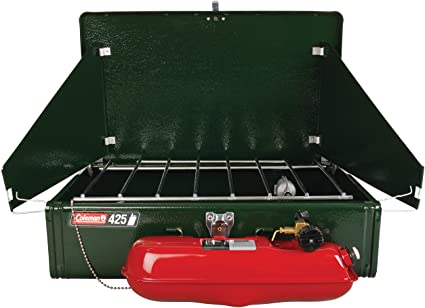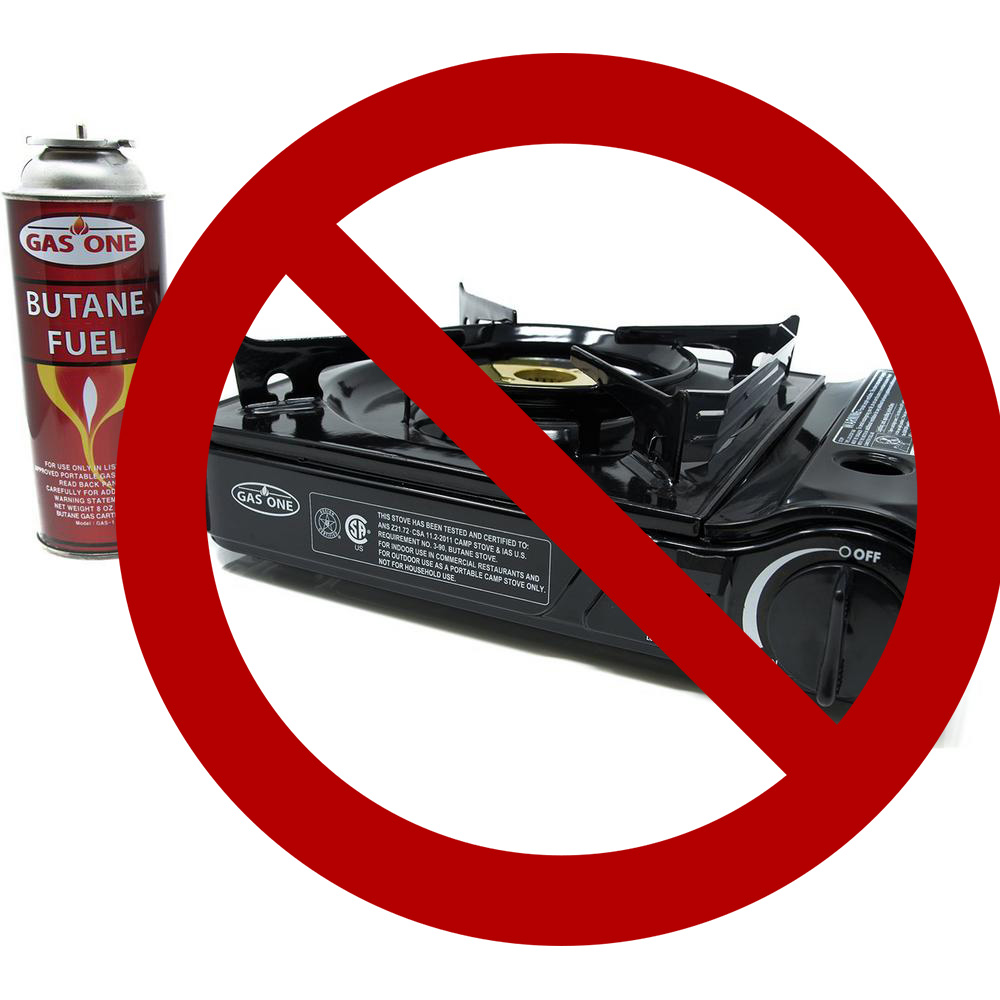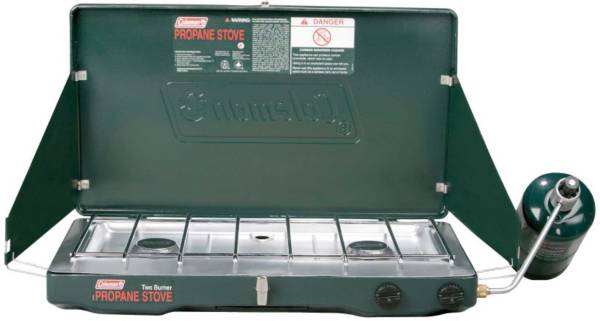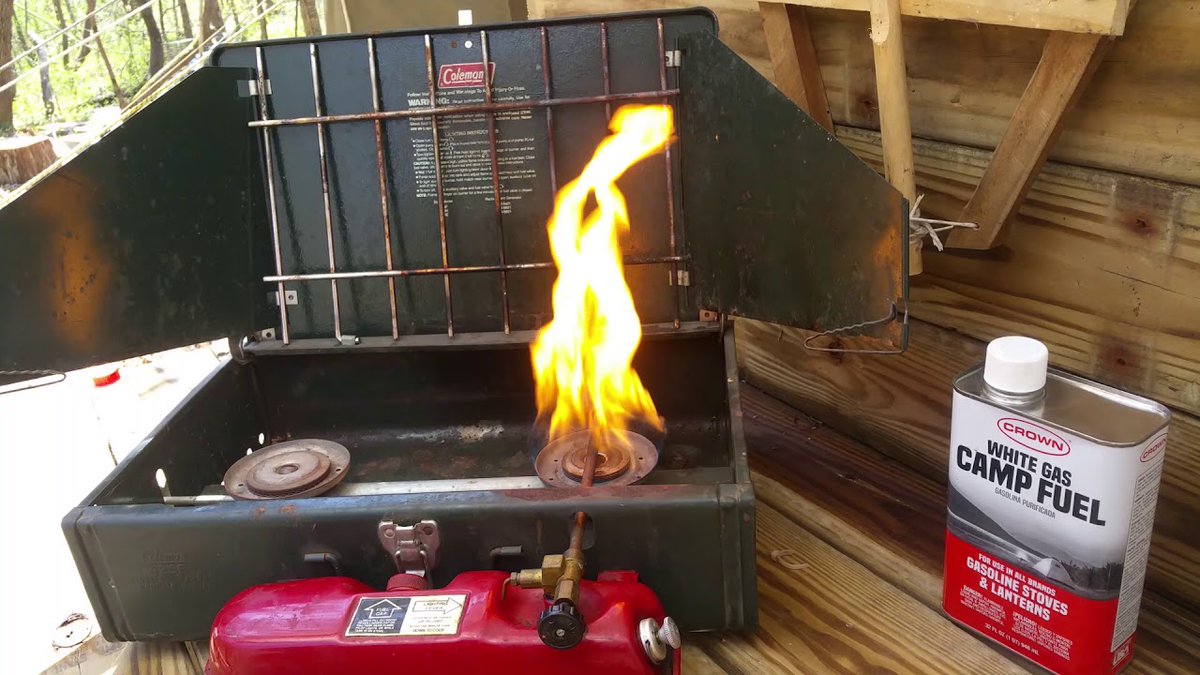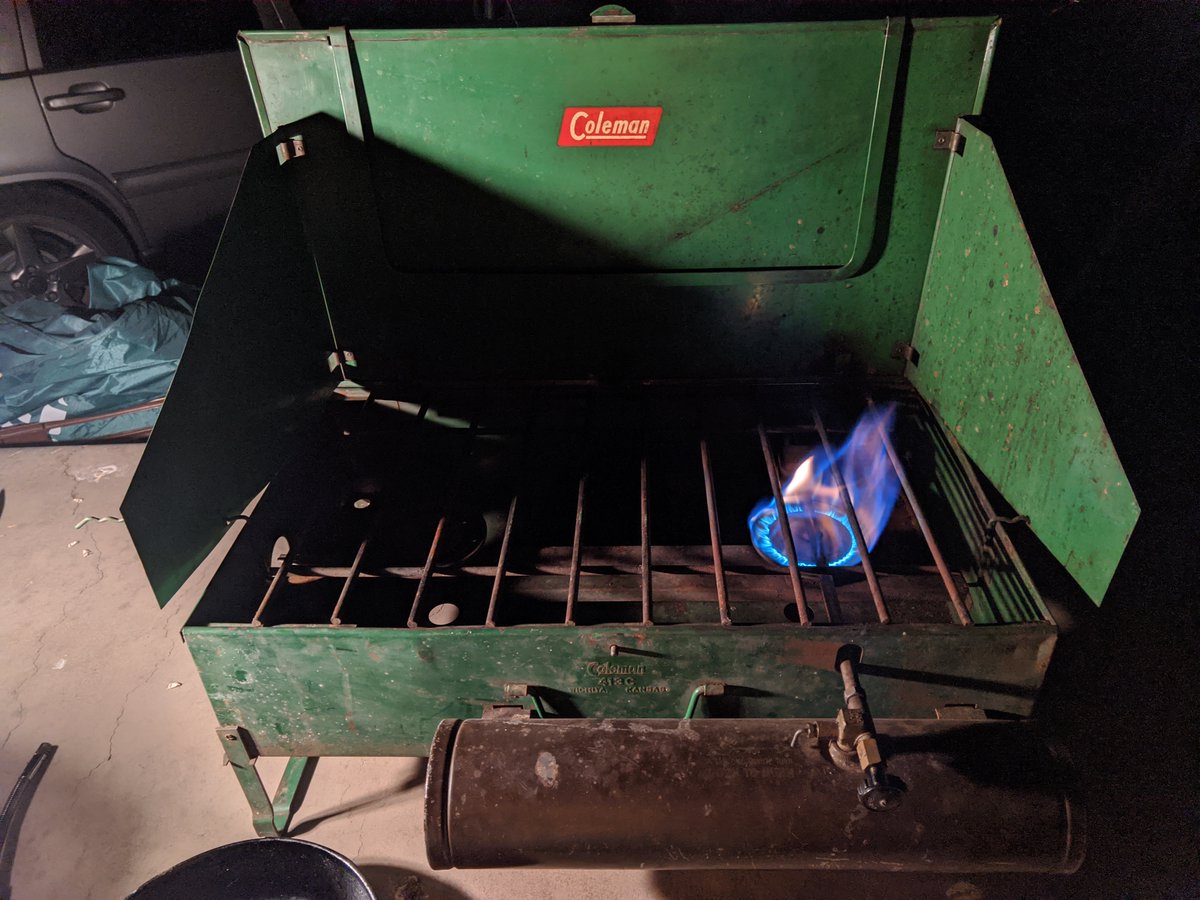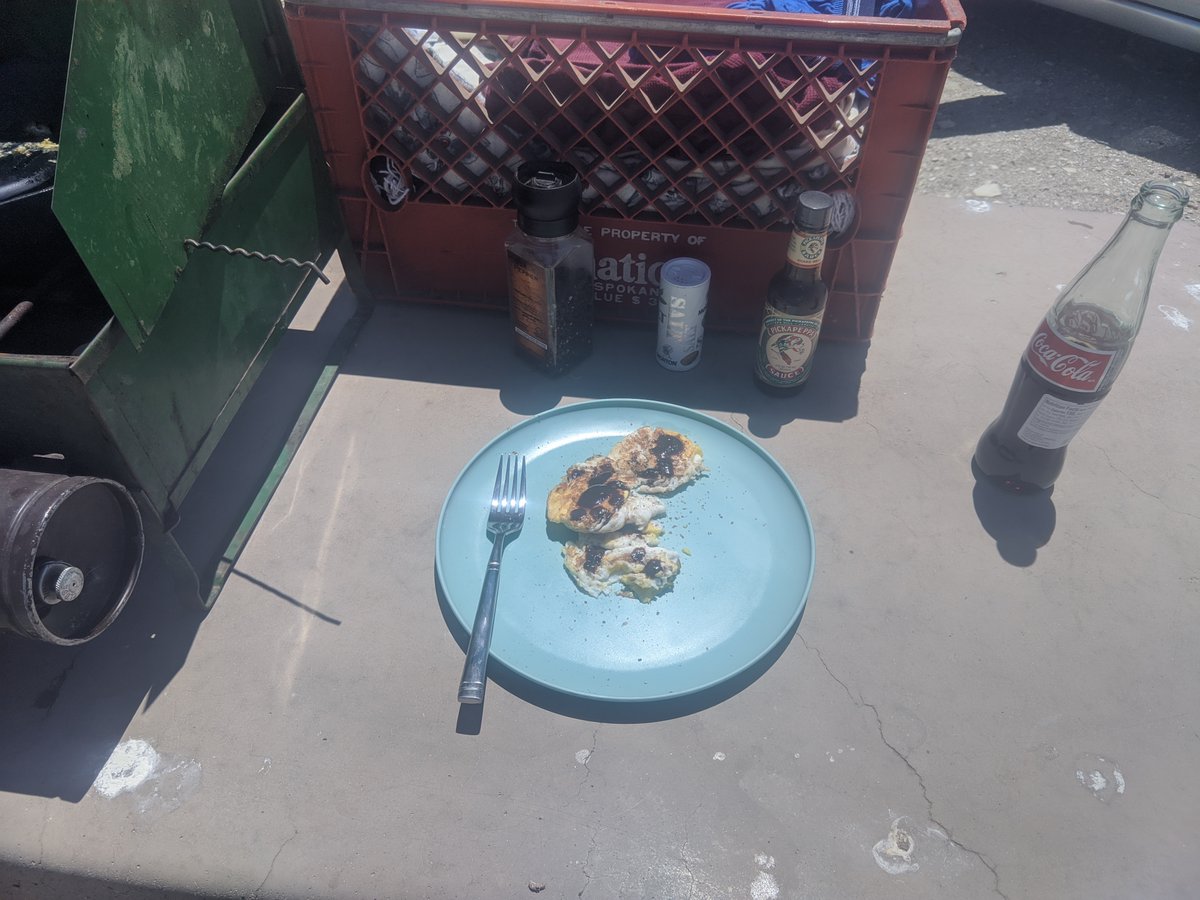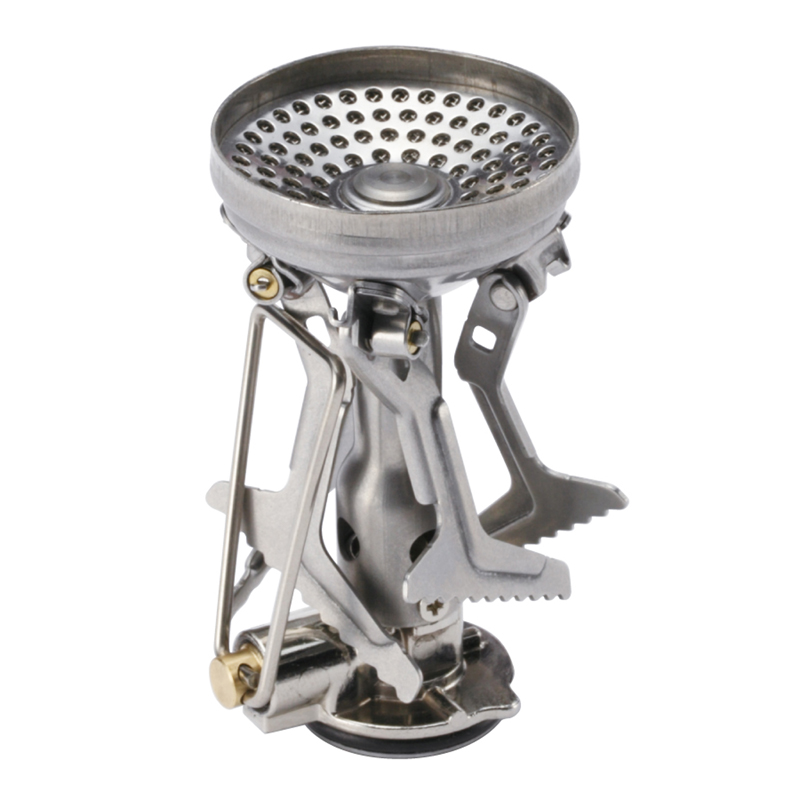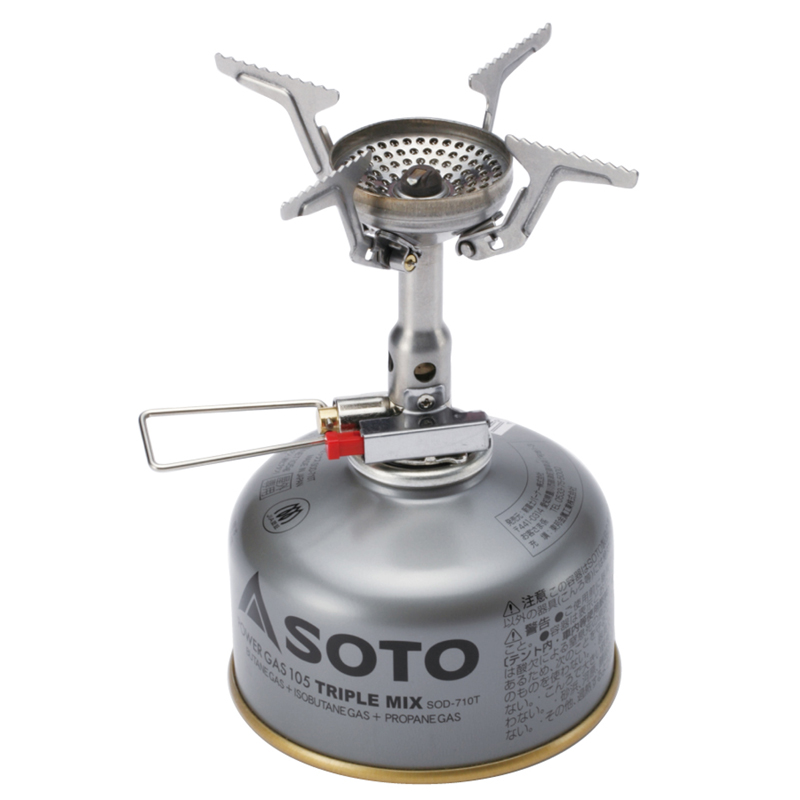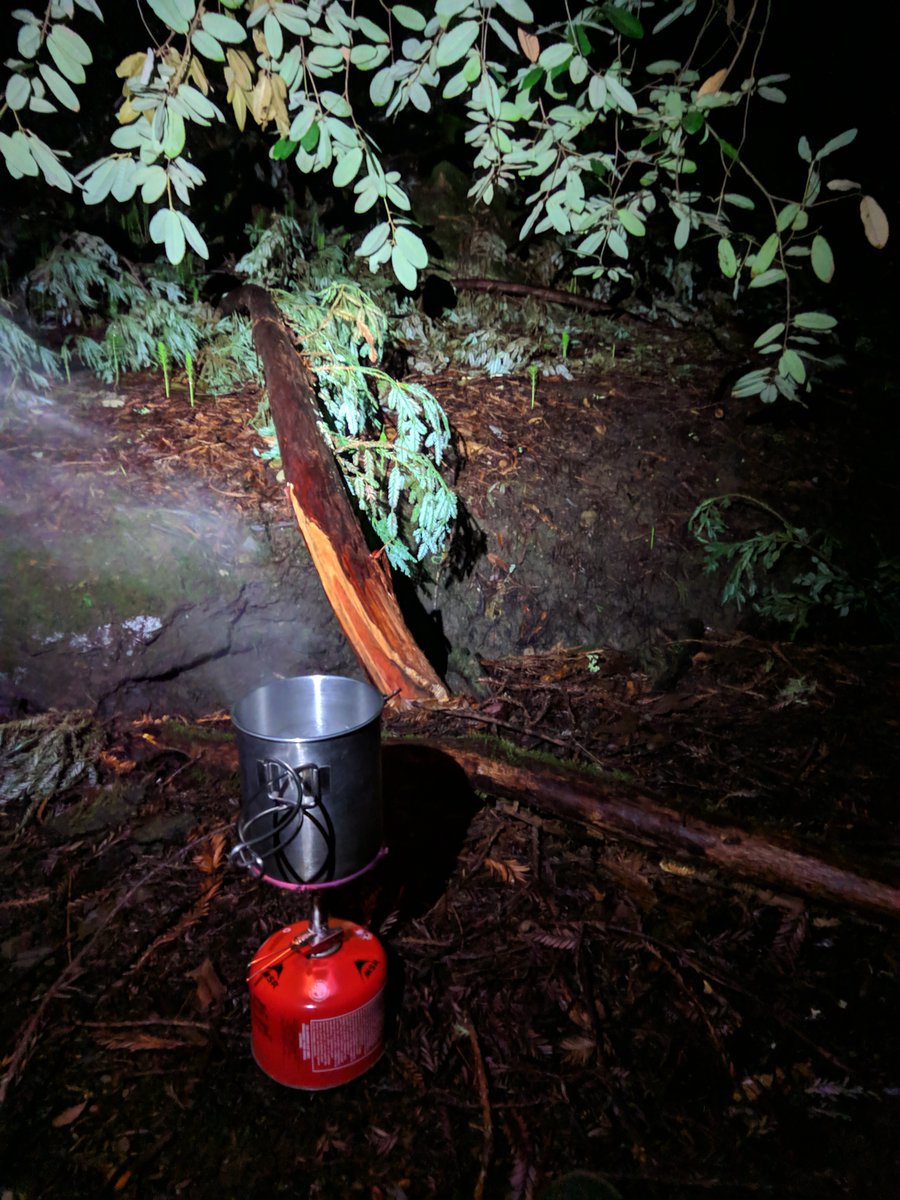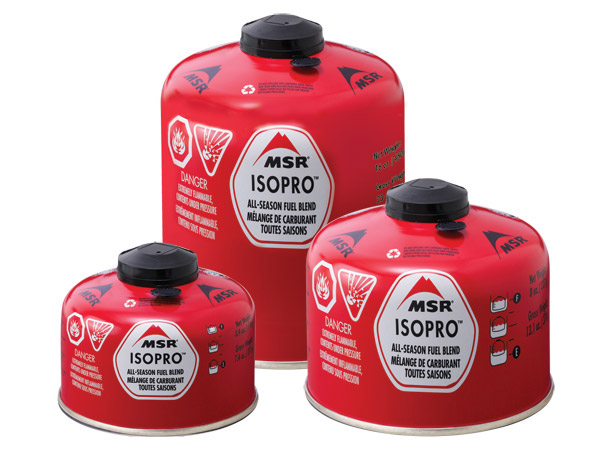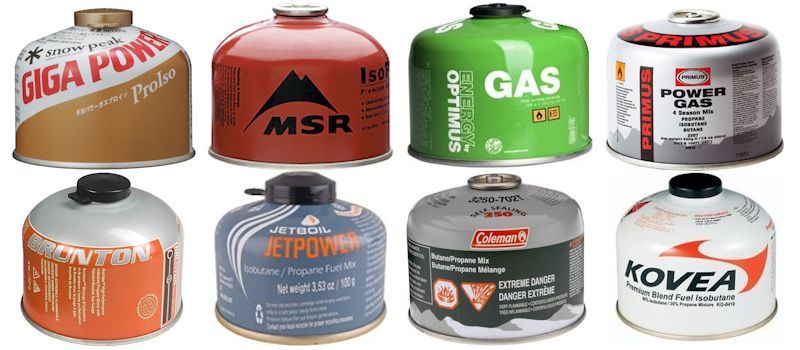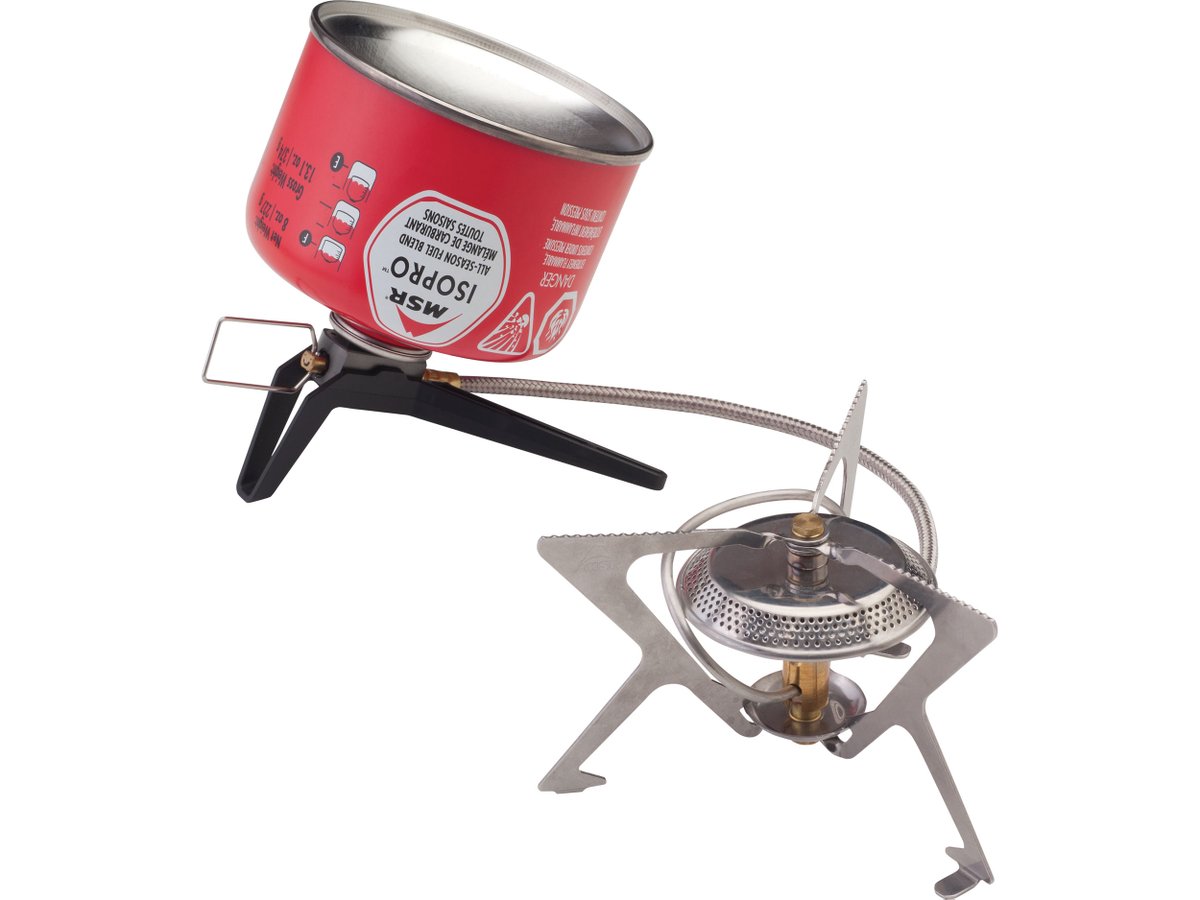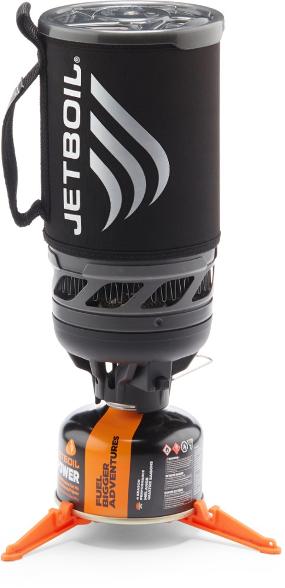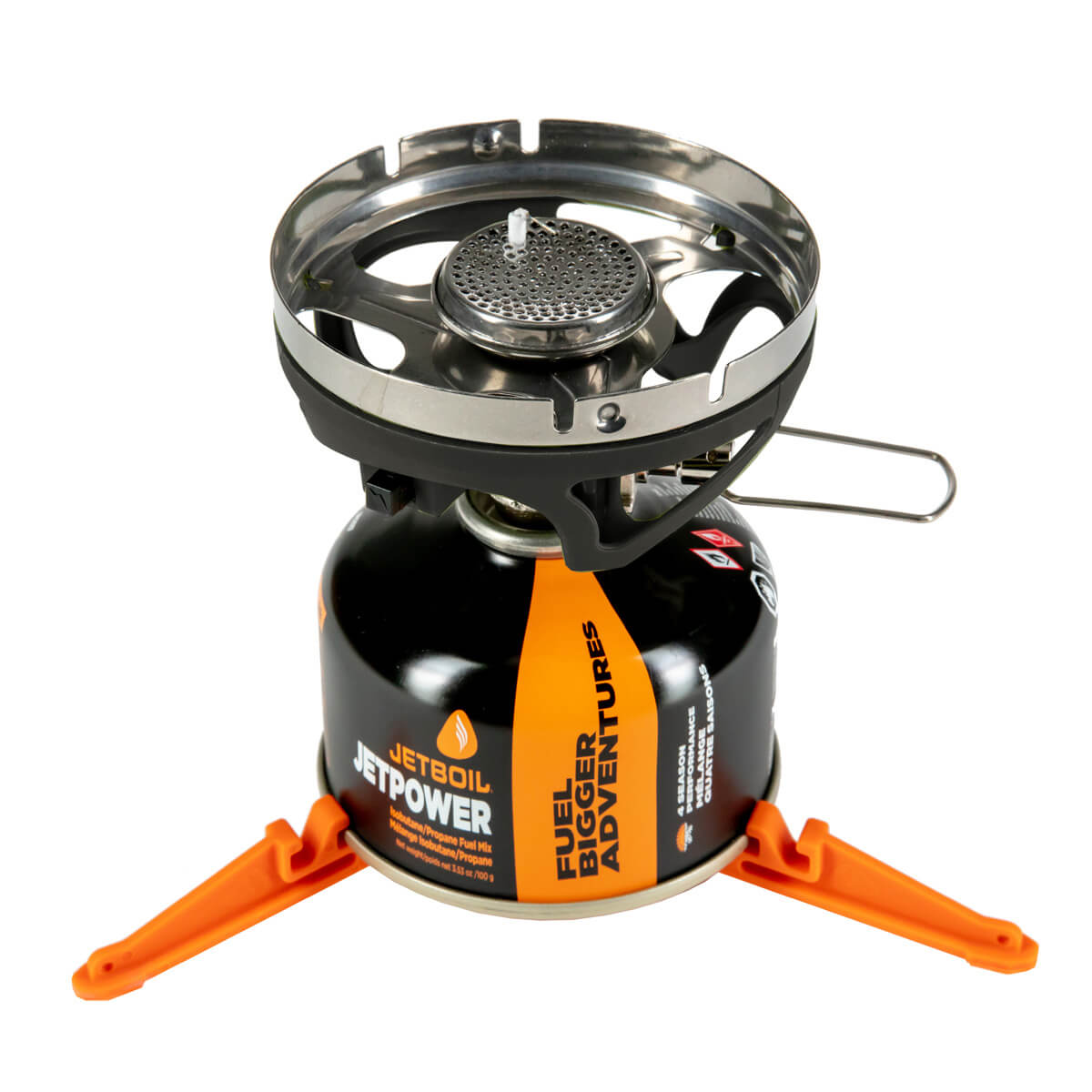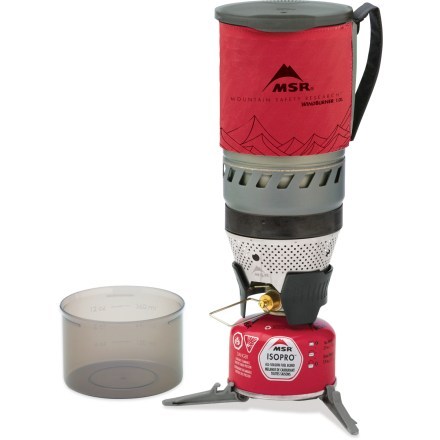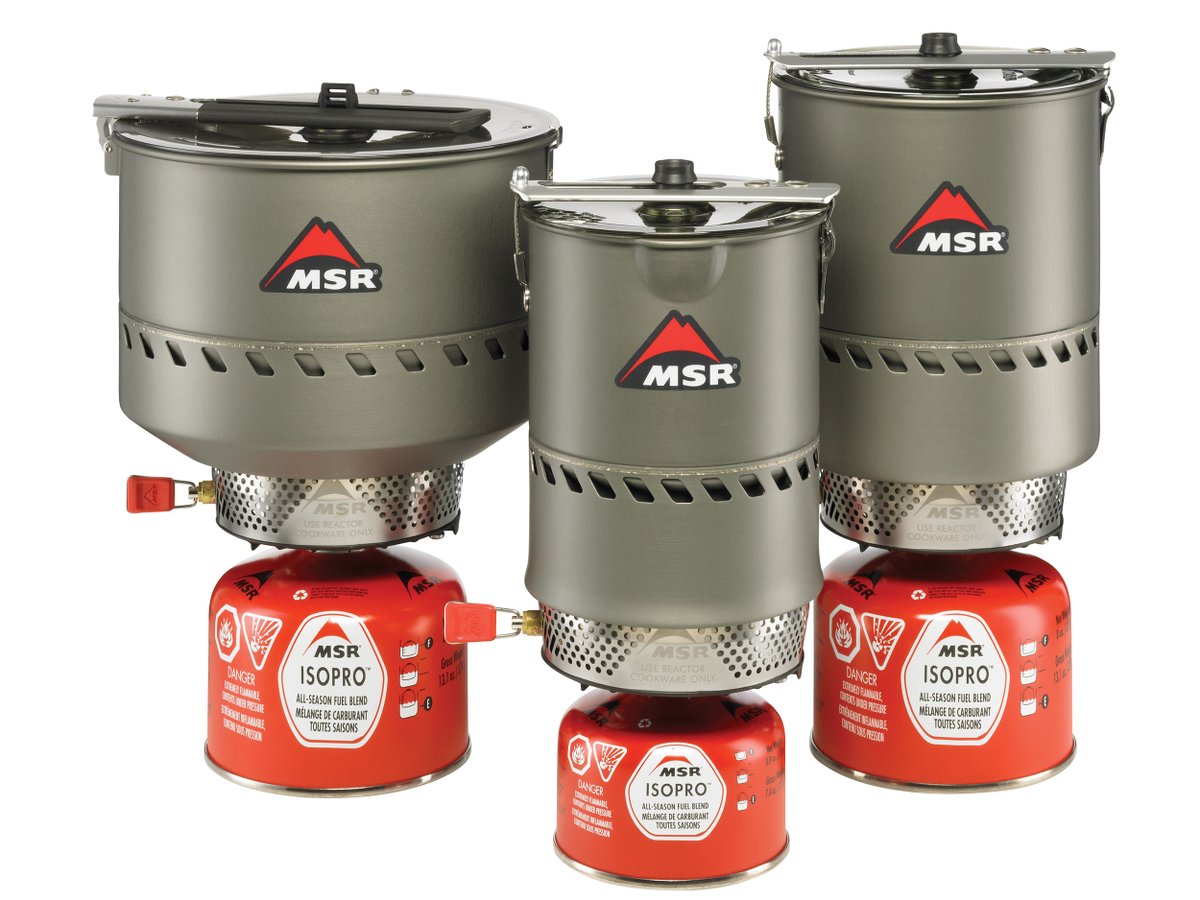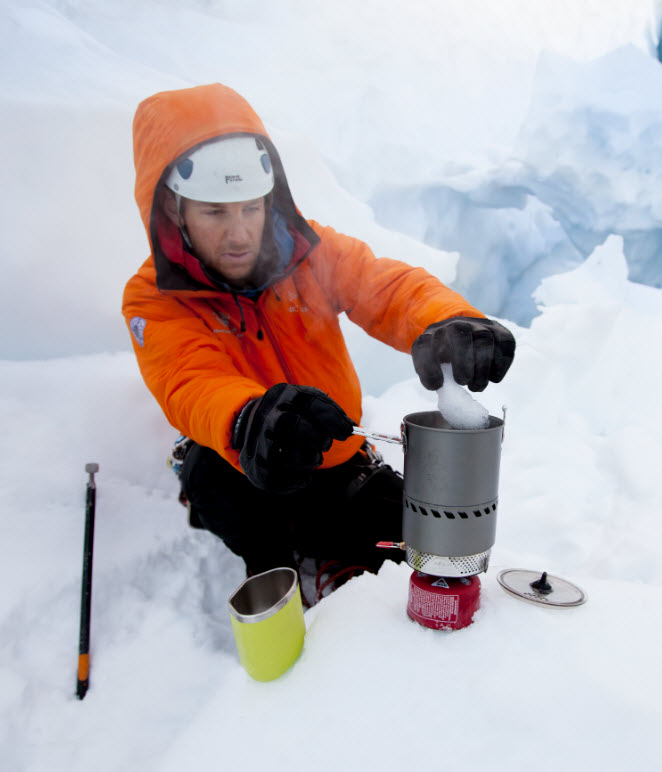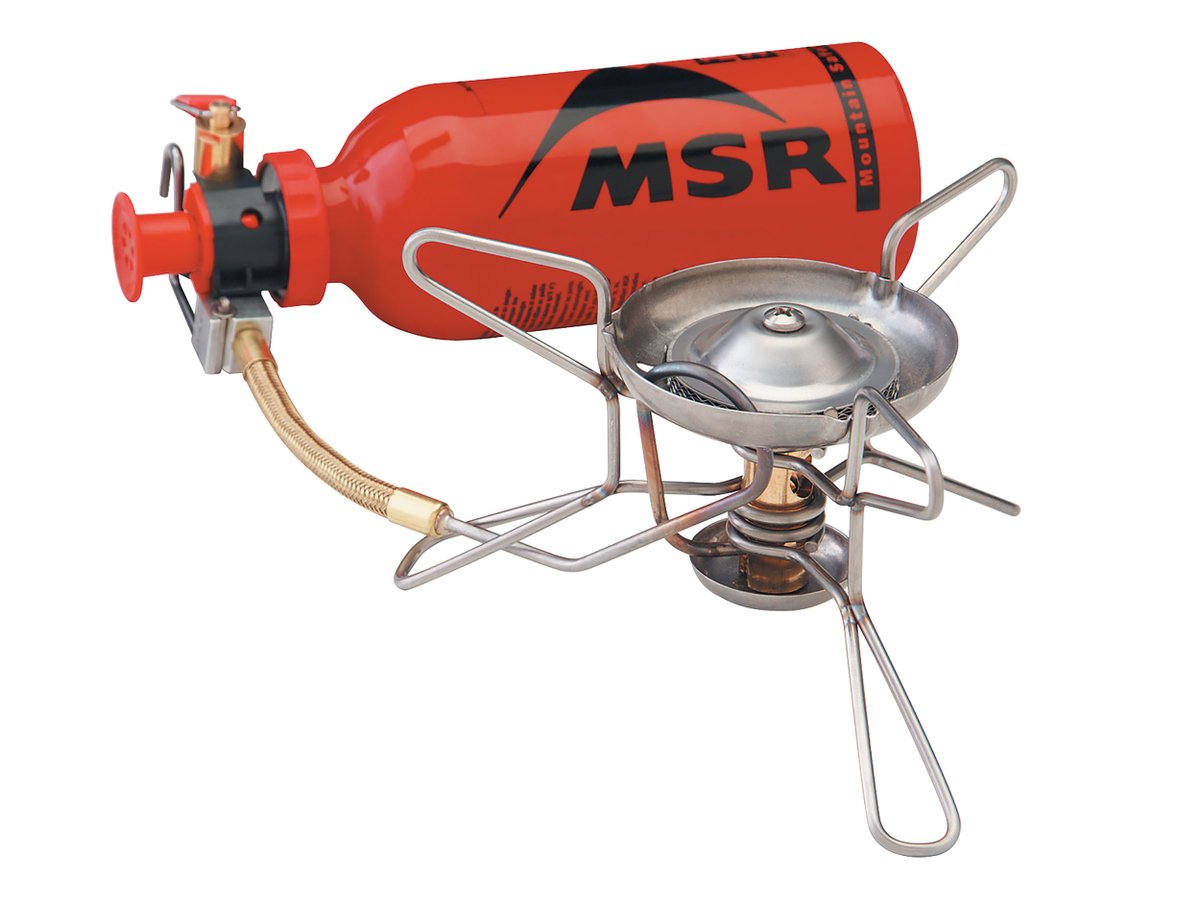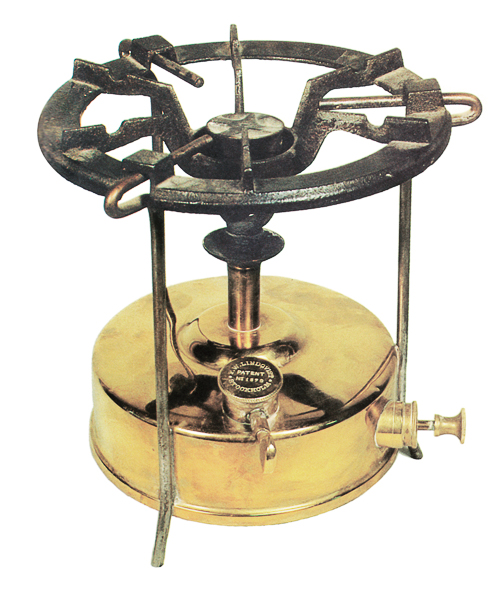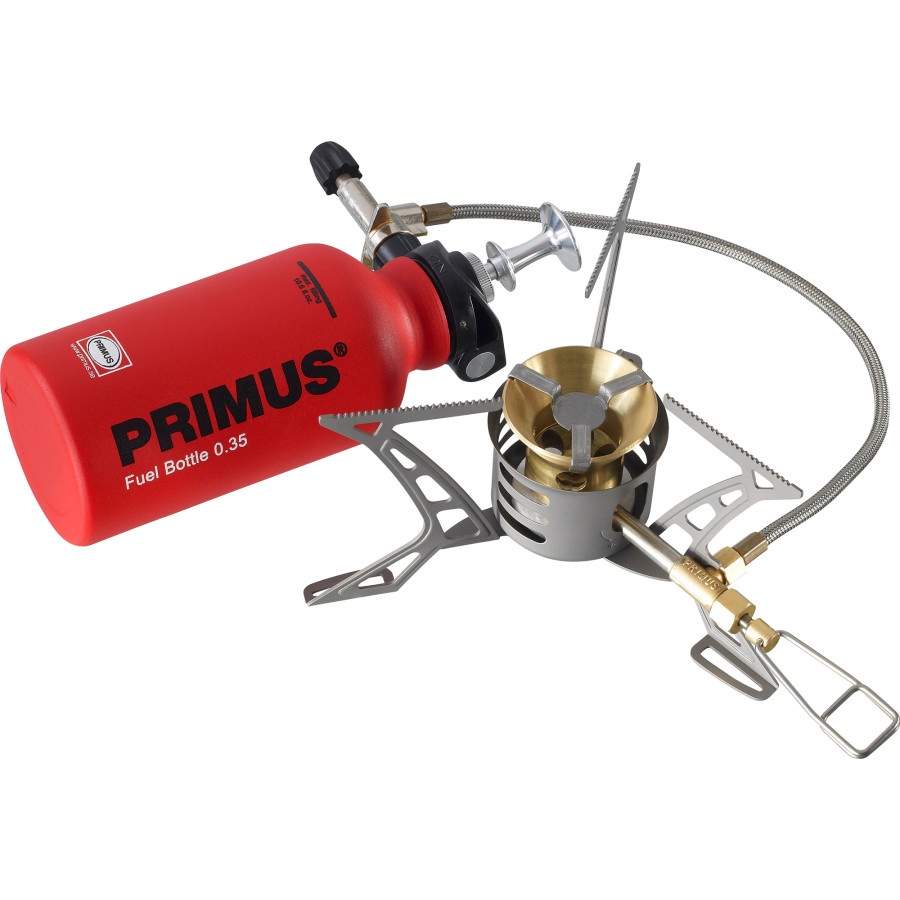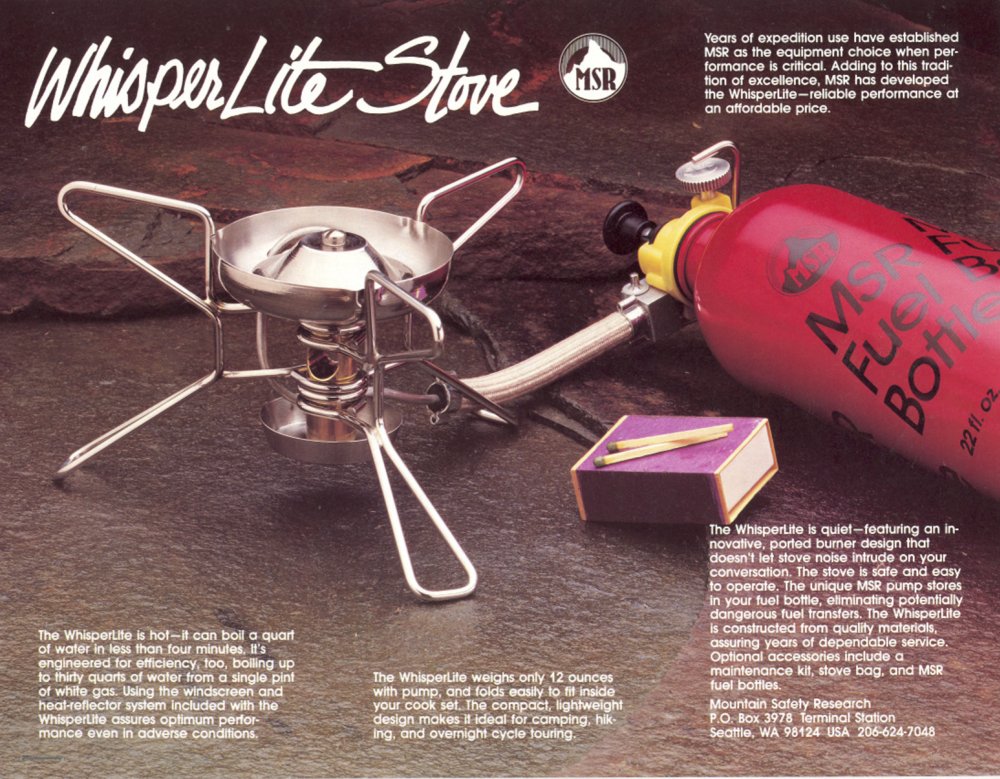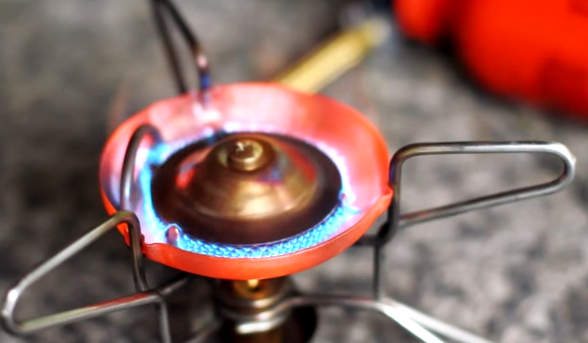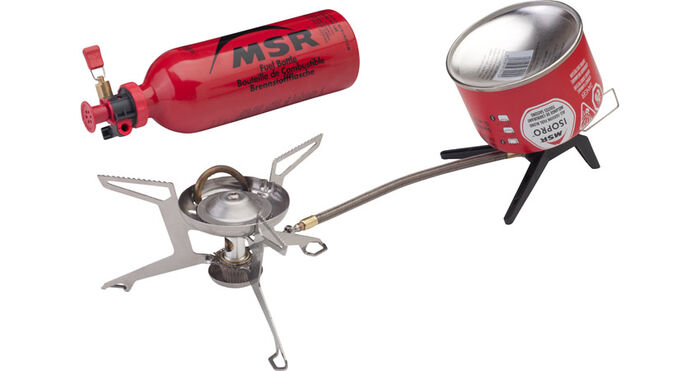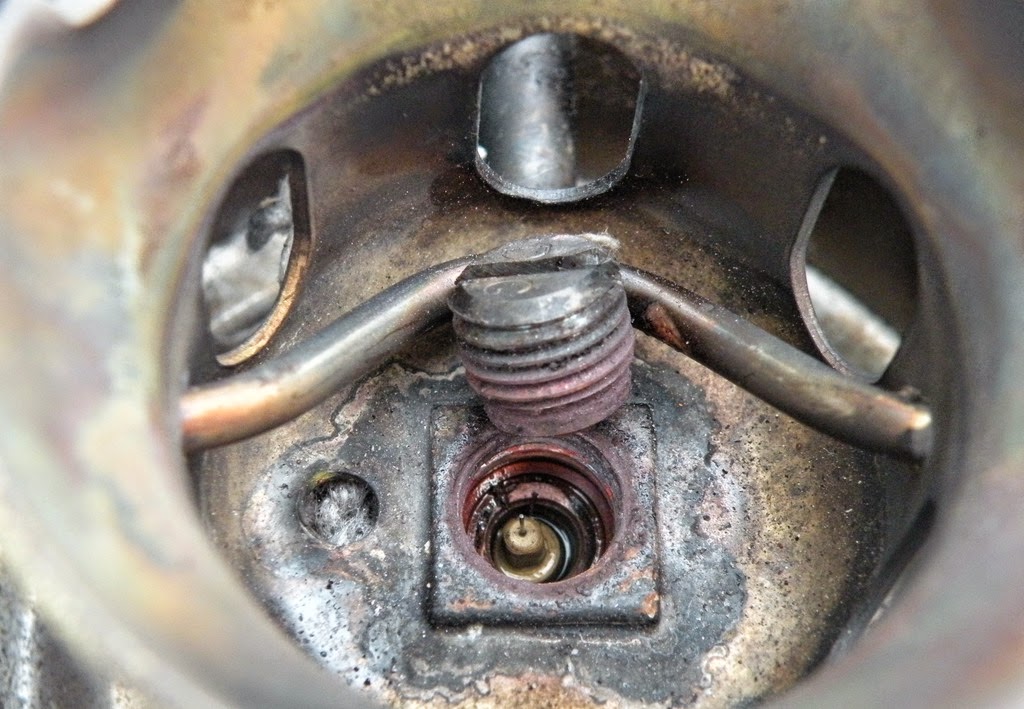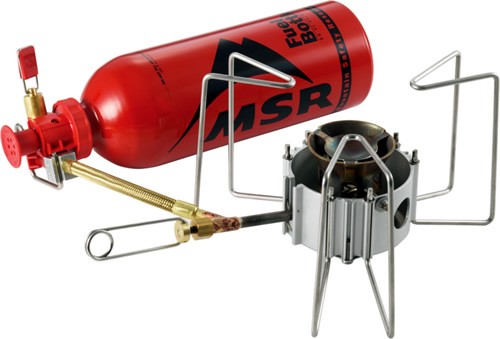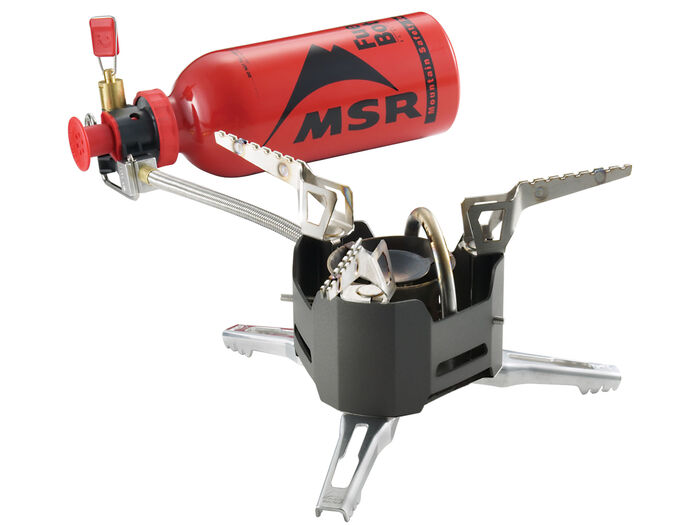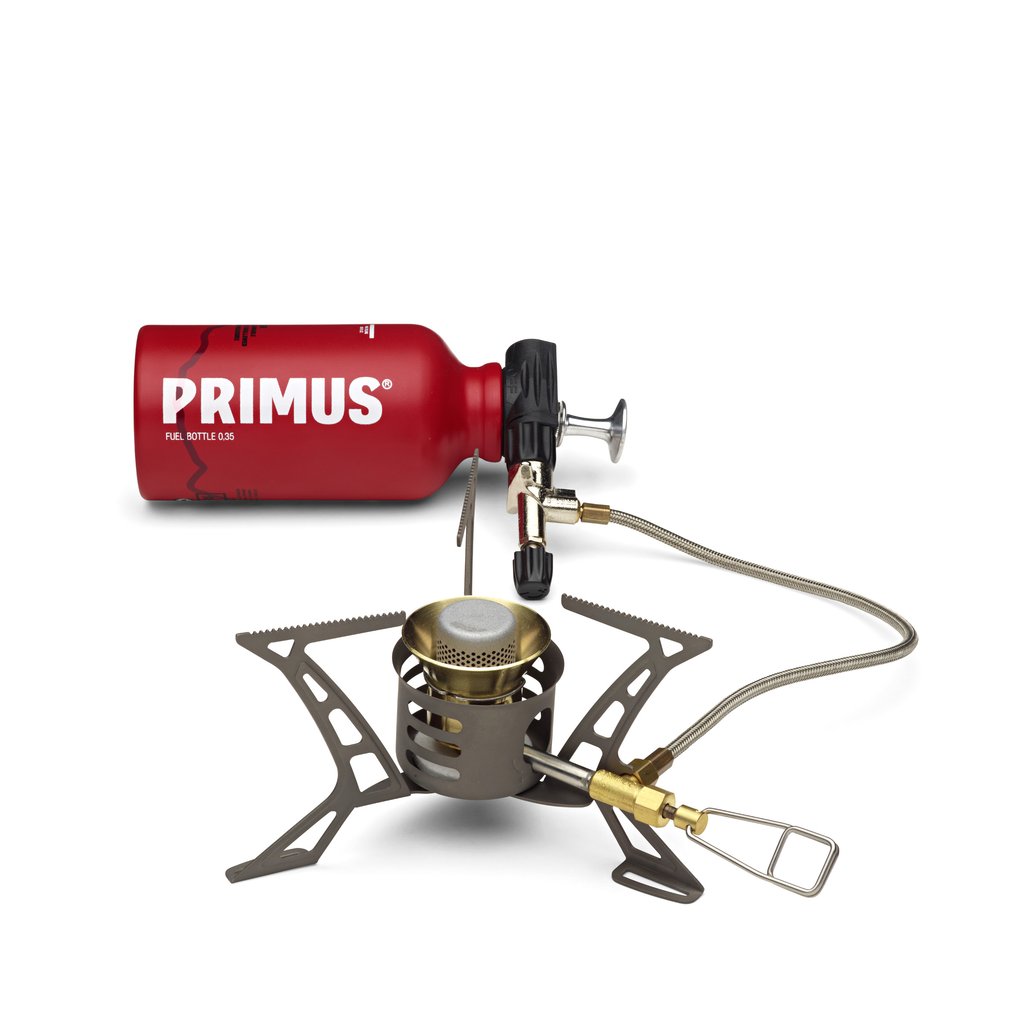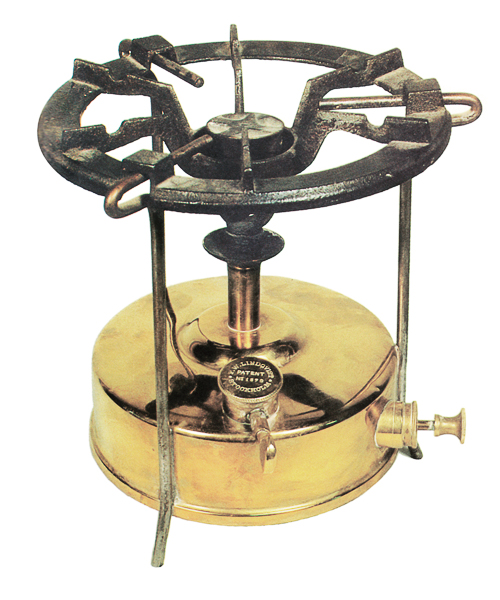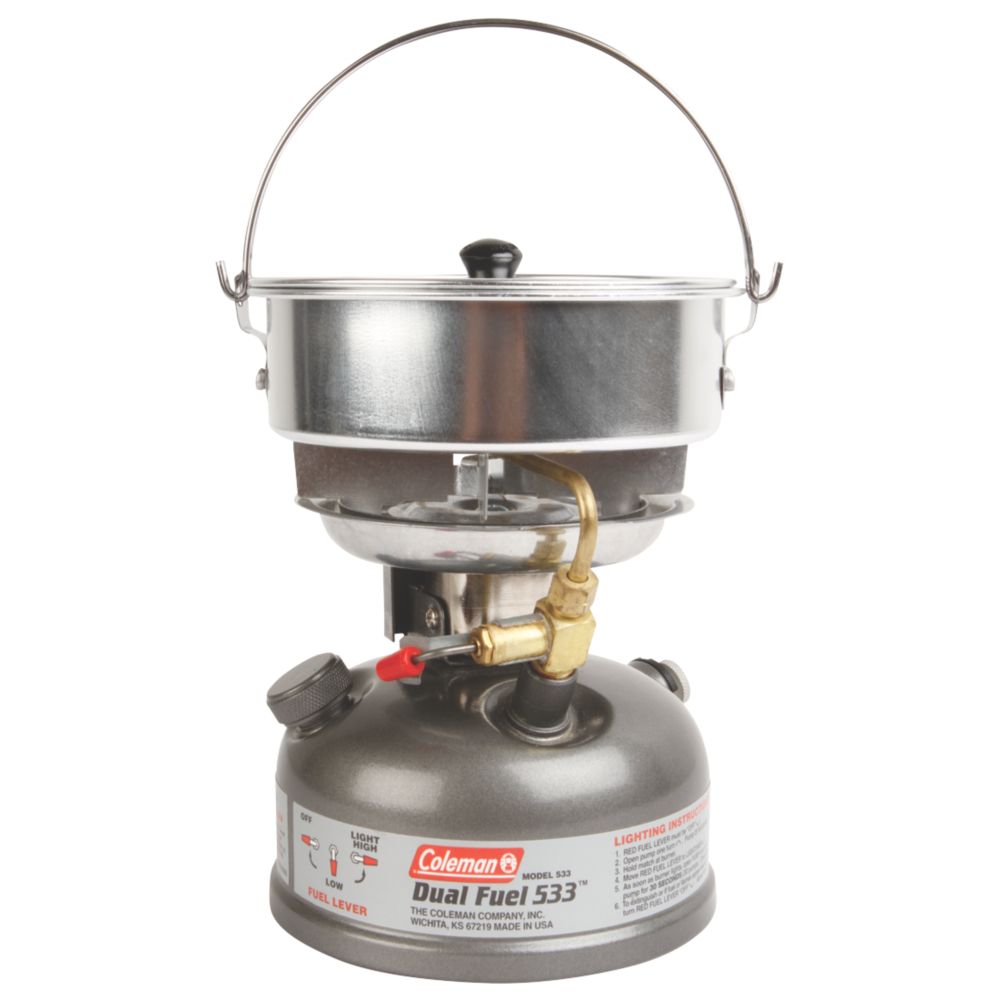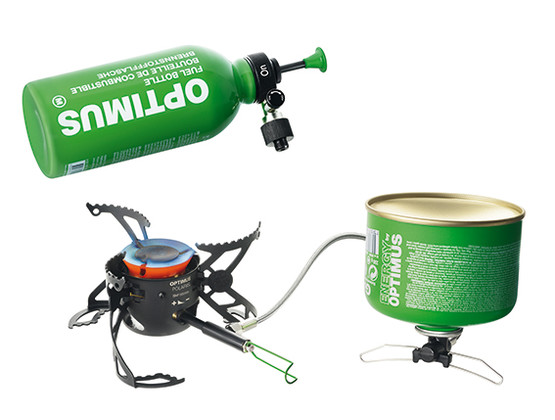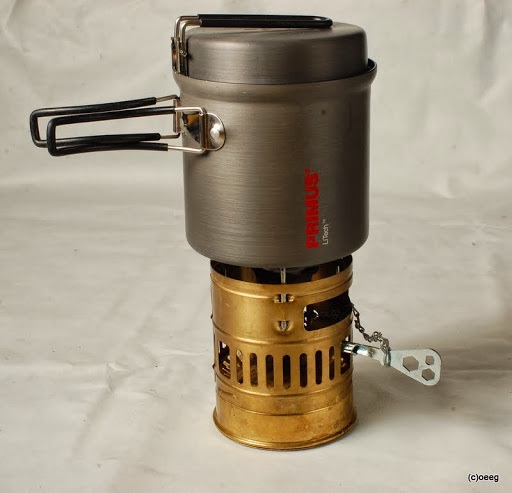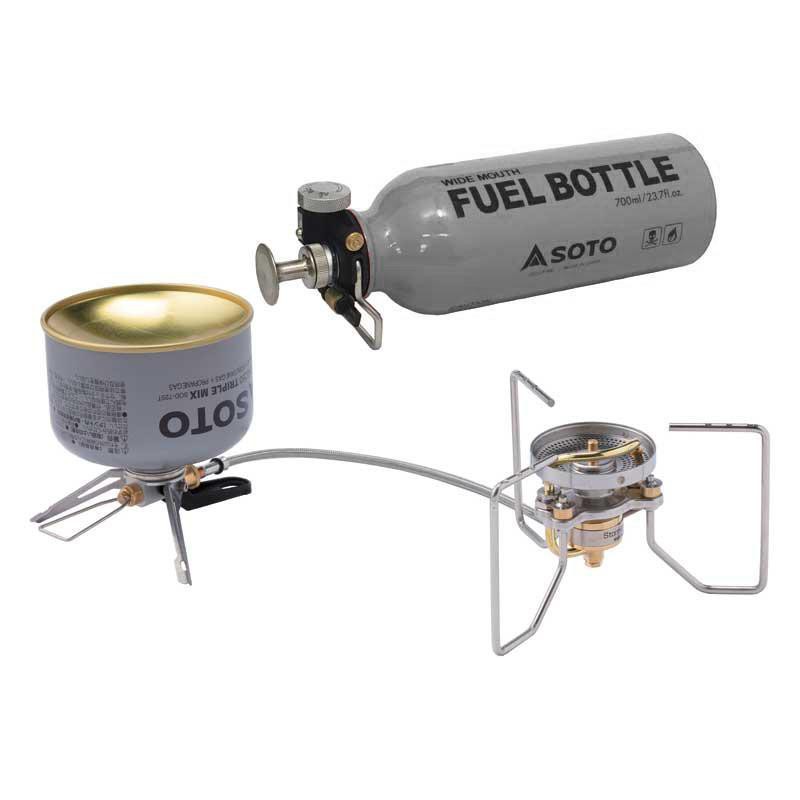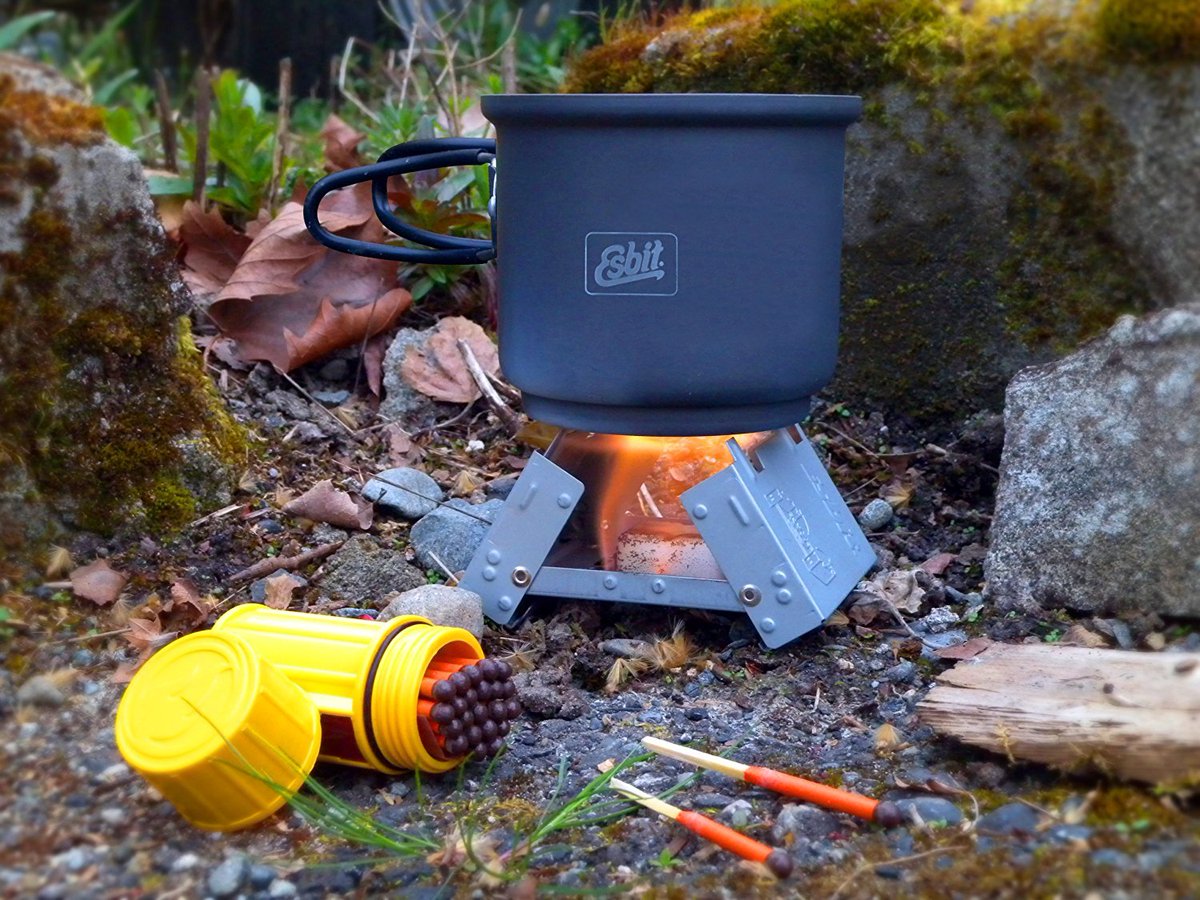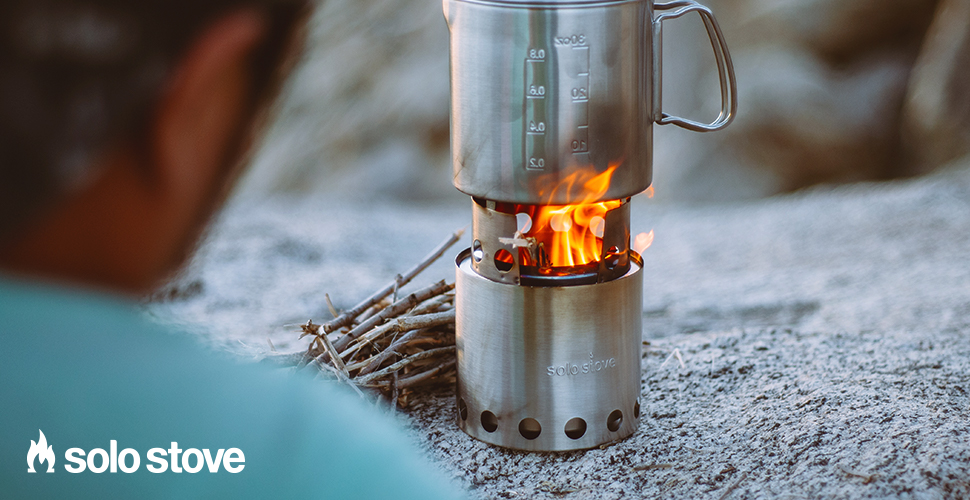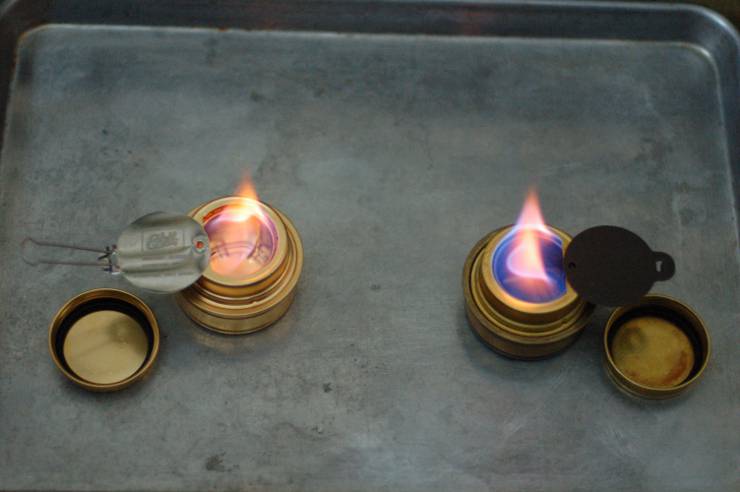here's a thread on portable stoves, because not everyone has a gas range or can safely ventilate their kitchen in a power outage
First things first: don't use these indoors. You might die of carbon monoxide poisoning unless you open all the windows, and then you're letting your house heat out. The following information is for using the stove outdoors.
If you have an electric range and your area is susceptible to power outages or natural disasters, you may want to consider a portable stove. If you have a gas range and your kitchen doesn't have windows that open, it may also be a good idea, to prevent carbon monoxide buildup.
Generally, these are divided into camp stoves and backpacking stoves. Camp stoves are meant for hauling around in cars, and are often suitcase-shaped. They're usually easier to use, but much bulkier than backpacking stoves, which are meant to be carried.
You can generally categorize camp stoves based on their fuel: butane, propane, or liquid (white gas).
Unless you have no choice, avoid butane stoves. Butane's boiling point is high enough (~30°F) that the stove starts to lose efficiency in cold temperatures or won't work at all.
Unless you have no choice, avoid butane stoves. Butane's boiling point is high enough (~30°F) that the stove starts to lose efficiency in cold temperatures or won't work at all.
In an emergency, if you have a butane stove and it won't work, you may be able to warm the canister with body heat to get the stove started by keeping it in your clothing. If the design of the stove prevents enough burner heat from transferring to the bottle, this may not work.
Probably the most common sort of camp stove runs on propane. Propane is easy to use, will below freezing (down to -40 degrees), and the canisters are widely available. The main disadvantage is that the canisters are bulky and heavy, and it may be more expensive than white gas.
Liquid-fuel stoves usually run on white gas (aka Coleman fuel), but some dual- or multi-fuel stoves can also run on automotive gas and kerosene. They're flexible and capable but require a little more work to use.
My own camp stove is a white-gas Coleman from the 1940s.
My own camp stove is a white-gas Coleman from the 1940s.
White gas is the easiest liquid fuel, but isn't always available. Automotive gas will clog a multifuel stove faster and can leave deposits on cookware. Kerosene needs priming with a bit of gas or alcohol (it's thicker) and has more heat per volume, but leaves soot on things.
Liquid-fuel stoves work by passing fuel, pressurized with a hand pump built into the tank, through a heated tube, the generator, to vaporize it. The vapor travels to the burner.
Priming is the initial process of heating the generator. Coleman stoves are self-priming: the lighting lever richly mixes air and fuel, so the burner can heat the generator for 60s to start.
Other stoves need a bit of gas or alcohol in a cup below the generator, manually lit.
Other stoves need a bit of gas or alcohol in a cup below the generator, manually lit.
For white gas camp stoves, Coleman is the brand. A Coleman will do you well whether it's new or an antique, if maintained right. I was able to buy a replacement pump for my 75-year-old Coleman on Amazon.
For propane, OutdoorGearLab has recommendations: https://www.outdoorgearlab.com/topics/camping-and-hiking/best-camping-stove
For propane, OutdoorGearLab has recommendations: https://www.outdoorgearlab.com/topics/camping-and-hiking/best-camping-stove
(OutdoorGearLab thoroughly tests and compares every single thing they review, and though they don't always consider every option in the first place, I trust their judgement completely.)
Now, backpacking stoves. Maybe you want something capable you can also take backpacking, or that'll fit in a small space.
Propane isn't used in backpacking due to the weight of the canisters. Isobutane is used instead. It's usually available in outdoors stores.
Propane isn't used in backpacking due to the weight of the canisters. Isobutane is used instead. It's usually available in outdoors stores.
My backpacking stove is a Soto Amicus, shown above. I used to use a Snow Peak GigaPower stove, and took it on one backpacking trip, but the Amicus is much more wind-resistant and generally better.
Hikin Jim, a trustworthy stove reviewer, has a review: https://adventuresinstoving.blogspot.com/2016/12/review-soto-amicus.html
Hikin Jim, a trustworthy stove reviewer, has a review: https://adventuresinstoving.blogspot.com/2016/12/review-soto-amicus.html
Isobutane mixtures (containing some amount of isobutane and some amount of propane) are used for backpacking because the canisters are very lightweight, but the mixture will still vaporize and burn at moderately low temperatures, down to around 11°F.
The design of canisters stoves generally transfers some heat to the canister once the stove's running; you can increase efficiency in cold conditions by keeping your fuel in your jacket or sleeping bag.
There are also liquid-feed canister stoves like the MSR Windpro II.
There are also liquid-feed canister stoves like the MSR Windpro II.
Those are bulkier than regular stoves, but a remotely mounted burner can be easier to situate stably, they're safe to place reflective wind shields around, and they'll allow you to use the same fuel in lower temperatures.
More info from Hikin Jim: https://adventuresinstoving.blogspot.com/2016/12/gas-stoves-in-cold-weather-regulator.html
More info from Hikin Jim: https://adventuresinstoving.blogspot.com/2016/12/gas-stoves-in-cold-weather-regulator.html
Canister stoves come in both separate and integrated varieties. Lightweight backpackers love Jetboil-type integrated stove systems. They use heat exchangers for much faster heating, but can only be used with their own compatible cookware and accessories.
Those are made by several manufacturers; here's the MSR Windburner. They're not the best for gourmet cooking, but extremely good at boiling things and preparing freeze-dried backpacking meals.
The enclosed burner means they're much more resistant to wind without shielding.
The enclosed burner means they're much more resistant to wind without shielding.
The extreme is the ultra-high-output MSR Reactor system, which uses a unique radiant burner and heat exchangers. The burner ensures maximum heat with efficient stoichiometric burn. The Reactor's a snow (and food) boiler, its output can't be reduced, and it's immune to wind.
The other main kind of backpacking stove, much older than canister stoves, is the liquid-fuel stove, a lightweight equivalent of the camp stoves discussed above.
Liquid fuel is widely available and cheap, and a liquid-fuel stove will work in the most extreme conditions on Earth.
Liquid fuel is widely available and cheap, and a liquid-fuel stove will work in the most extreme conditions on Earth.
One advantage of liquid-fuel stoves is that most of them have remote burners, and can be used with a windscreen without heating the fuel tank dangerously. This makes the stove more efficient as it's both reflecting heat back onto the cookware and keeping it from being blown away.
The MSR Whisperlite is a favorite of backpackers worldwide. It was introduced in 1984. My parents used one in the Sierras.
They're lightweight, ultra-simple, and ultra-reliable. They're best at boiling, though they can be made to simmer with pump tricks.
They're lightweight, ultra-simple, and ultra-reliable. They're best at boiling, though they can be made to simmer with pump tricks.
MSR makes several versions, including the Whisperlite International, which can also burn unleaded auto gas and kerosene in addition to white gas, and the Whisperlite Universal, which can burn all those and function as an inverted feed canister stove.
One MSR hallmark is the Shaker Jet. The orifice that controls the flow of fuel vapor to the burner can become clogged with use, leading to poor or no performance; Shaker Jet stoves include a loose needle, so most clogs can be cleared without tools by shaking the stove.
MSR also makes the DragonFly, a more advanced stove with a simmer valve, and the XGK-EX, an ultra high power expedition stove, for maximum reliability and output (it's another snow boiler).
The Whisperlite is called that because it's extremely quiet. Both of MSR's more advanced stoves have an older cup burner design and are EXTREMELY FUCKING LOUD, but there are aftermarket selective-laser-sintered noise dampers available.
Primus is another trustworthy brand; they're Swedish, and have been making liquid-fuel stoves for nearly 130 years. They have a metal fuel pump with a leather cup seal, as opposed to MSR's plastic pump and rubber cup. Their Omnilite Ti is an ultra-lightweight titanium model.
They make a variety of other liquid-fuel and canister stoves at various price points and capabilities. You could also go for an antique one and imagine you're exploring the Arctic; it'll burn just as well as a modern stove.
Coleman currently makes the 533, which has the fuel tank integrated with the stove. It's self-priming, so you don't have to pour fuel into a priming cup and light the entire stove on fire to start it, but you can't use a fully enclosing windscreen safely, and it's heavy.
Optimus is another Swedish brand, and they currently manufacture both new-style stoves like the Polaris Optifuel and the classic Svea 123R.
However, I've heard they have horrible quality control since the Katadyn Group bought them. I don't know if this has been rectified yet.
However, I've heard they have horrible quality control since the Katadyn Group bought them. I don't know if this has been rectified yet.
Soto, a Japanese brand, makes a unique and very neat little multi-fuel stove, the StormBreaker. It's self-priming as the fuel-air mixing is done by the pump, and it uses Soto's wind-resistant concave burner, but the pump is intricate and the fuel bottles are proprietary.
The StormBreaker may have been discontinued in the US, as it fills a niche (high-tech backpacking stove) that didn't need filling, but I still kinda want one. When I asked before it was introduced in the US, Soto said it would still be covered under warranty if I imported it.
Overall, brands to trust (proven by extensive outdooor use) in stoves include: MSR, Primus, Jetboil, Snow Peak, Soto, Coleman and maybe Kovea.
Avoid buying an ultra-cheap stove if you can help it, but if you need something inexpensive for emergencies only, do your research!
Avoid buying an ultra-cheap stove if you can help it, but if you need something inexpensive for emergencies only, do your research!
That's about it for the mainstream stoves. There are other stove technologies, like solid-fuel/Esbit tablet stoves, Solo-type twig-burners, ultralightweight alcohol stoves, and the Borde Bomb, a terrifying self-pressurized liquid fuel stove that heats itself up to work.
MORE INFO, because you should do your own research too, or in case you've caught Stove Fascination Disease:
Zen Backpacking Stoves has a wealth of information on both homemade alcohol burners and every other kind of stove under the sun. http://zenstoves.net/
Zen Backpacking Stoves has a wealth of information on both homemade alcohol burners and every other kind of stove under the sun. http://zenstoves.net/
Hikin Jim, an experienced user and reviewer of every mainstream sort of stove, has opinions that I trust, and technical explanations of many aspects of stove use and performance, at his blog Adventures in Stoving: https://adventuresinstoving.blogspot.com
OutdoorGearLab has extensive review and comparisons of backpacking stoves: https://www.outdoorgearlab.com/topics/camping-and-hiking/best-backpacking-stove
and (as linked above) of camping stoves: https://www.outdoorgearlab.com/topics/camping-and-hiking/best-camping-stove
and (as linked above) of camping stoves: https://www.outdoorgearlab.com/topics/camping-and-hiking/best-camping-stove
Section Hiker also has recommendations for backpacking stoves: https://sectionhiker.com/sectionhiker-gear-guide/10-best-backpacking-stoves/
and many stove reviews: https://sectionhiker.com/category/gear-reviews-2/stove-reviews/
and many stove reviews: https://sectionhiker.com/category/gear-reviews-2/stove-reviews/
There are many more resources, including the Classic Camp Stoves forum if you have stove brain disorder like me and want to learn how to use and fix ("fettle") vintage stoves.
And then, you have mantle lanterns, which run off the same fuel, but that's a thread for another time.
And then, you have mantle lanterns, which run off the same fuel, but that's a thread for another time.

 Read on Twitter
Read on Twitter